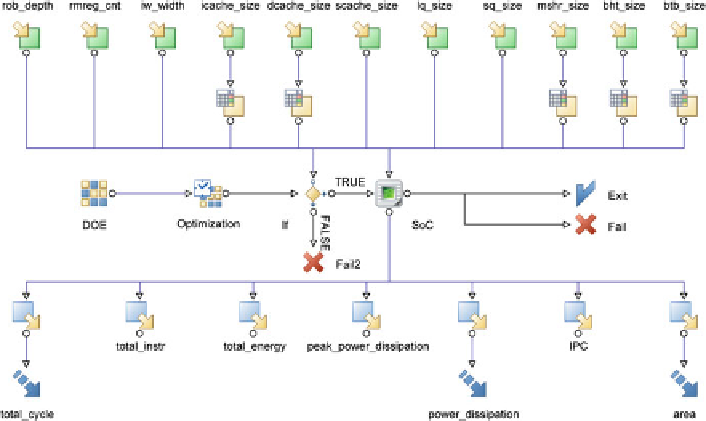Hardware Reference
In-Depth Information
Fig. 8.1
The modeFRONTIER optimization workflow
The worklow specifies both a data path and a process path, which represent respec-
tively, the data flow for the evaluation of a design and the optimization execution
flow as described below.
The data path, which flows vertically from the top to the bottom, contains one
input node for each configuration parameter and one output node for each metric
produced by the simulator. In this optimization task there are eleven input nodes
and seven output nodes. The System-on-Chip node (labeled as SoC) represents the
interaction with the simulator, and takes care of the interface between the exploration
tool and the simulator, passing values for the configuration parameters and getting
back the values of the metrics as produced by the simulator. The three objectives to
be minimized are represented with the arrow nodes.
The process path, which flows horizontally from left to right, starts with the Design
of Experiments node (DoE), which generates the initial set of configurations to be
evaluated. The optimization node (Optimization) guides the exploration of the design
space using an optimization algorithm to generate the subsequent configurations that
will be evaluated based on the performance of previous evaluations. The conditional
node (If) passes only feasible designs for evaluation to the System-on-Chip node.
Successful executions of the simulator will generate a valid design (Exit), and errors
will generate failed designs (Fail).
8.2.3.2
Design of Experiments
The Design of Experiments (DoE) technique is used to generate the initial set of
designs for evaluation. The aim is to define a limited number of test runs that allow
to maximize the knowledge gained by eliminating redundant observations, in such a

Search WWH ::

Custom Search